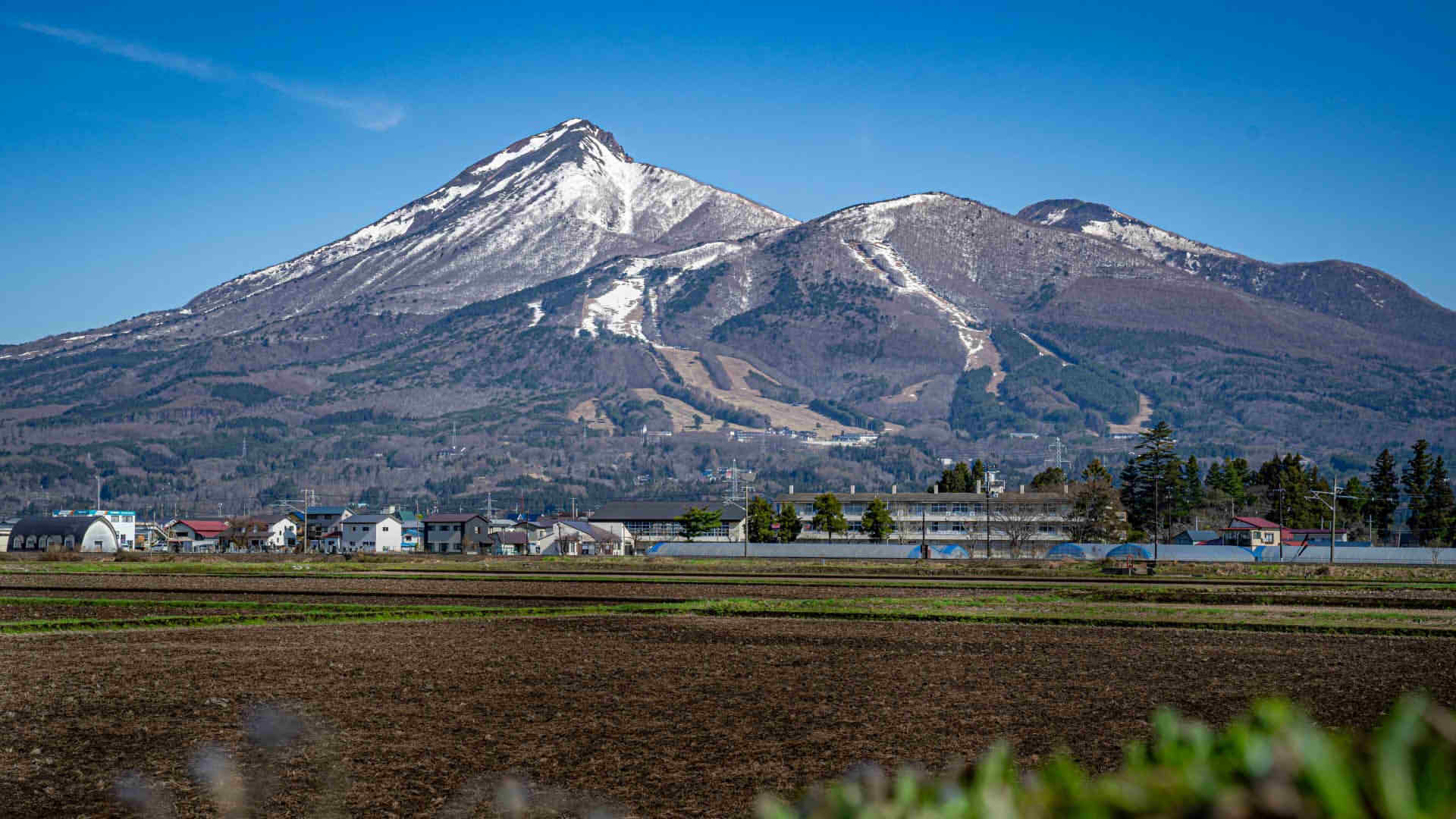
Aizu Bandai-san (会津磐梯山), also known as Mount Bandai or Bandai-san, is an active stratovolcano located in the Aizu region of Fukushima Prefecture, Japan. It is a popular destination for outdoor enthusiasts, nature lovers, and those seeking relaxation in hot springs.
Volcanic History and Formation:
Mount Bandai is not a single peak but a complex of several volcanic peaks, including Bandai-san, Kushigamine, and Akahaniyama. The highest point, Bandai-san, stands at 1,816 meters (5,968 feet). The mountain’s current form is the result of a massive eruption in 1888, which caused a landslide that dramatically altered the landscape, creating numerous lakes and ponds.
Natural Beauty and Outdoor Activities:
The area surrounding Mount Bandai is renowned for its stunning natural beauty. Lush forests, crystal-clear lakes, and cascading waterfalls provide a picturesque backdrop for various outdoor activities. Hiking trails of varying difficulty levels wind through the mountains, offering breathtaking views of the surrounding landscape. In winter, the area transforms into a winter wonderland, attracting skiers and snowboarders to its slopes.
Lakes and Ponds:
The eruption of Mount Bandai in 1888 created several lakes and ponds, including Lake Hibara, Lake Onogawa, Lake Akimoto, and the Goshikinuma Ponds. These bodies of water are known for their vibrant colors, ranging from deep blues and greens to turquoise and emerald, depending on the mineral content and sunlight. Visitors can enjoy leisurely walks around the lakes, boat rides, or kayaking.
Hot Springs:
The Bandai area is home to numerous hot springs, or “onsen,” renowned for their therapeutic properties. Many of these onsen are located in traditional Japanese inns, or ryokans, where guests can relax and rejuvenate in the mineral-rich waters while enjoying traditional Japanese hospitality and cuisine.
Cultural and Historical Attractions:
In addition to its natural beauty, the Bandai area offers cultural and historical attractions. The Mount Bandai Eruption Memorial Museum provides insights into the volcano’s history and the impact of the 1888 eruption. The nearby town of Inawashiro is home to the Hideyo Noguchi Memorial Museum, dedicated to the life and work of the renowned bacteriologist.
Bandai-Asahi National Park:
Mount Bandai is a prominent feature of the Bandai-Asahi National Park, which encompasses a vast area of mountains, forests, and wetlands. The park is home to diverse wildlife, including Japanese serow, Asiatic black bears, and various bird species.
Whether you’re seeking outdoor adventure, relaxation in hot springs, or cultural exploration, Aizu Bandai-san and its surrounding area offer a wealth of experiences for visitors to discover.
Getting there
By Train and Bus
- Take the Tohoku Shinkansen from Tokyo to Koriyama Station (about 80 minutes)
- Transfer to the JR Banetsu-sai Line to Inawashiro Station (about 40 minutes)
- From Inawashiro Station, take a bus to the Urabandai area
Total cost: About 9,000 yen one way (covered by Japan Rail Pass)
By Car
- From Tokyo: Take the Tohoku and Banetsu expressways via Koriyama Junction
- Exit at Inawashiro Bandai Kogen Interchange or Bandai Kawahigashi Interchange
- Travel time: About 3 hours
- Toll fees: Around 7,000 yen one way
Hiking Access
The easiest hiking trail starts at the Happodai Trailhead:
- Located along the Bandaisan Gold Line (a sightseeing road)
- About 2 hours to reach the summit
- Trail is closed in winter
Rental cars are recommended for flexibility, available in Aizu-Wakamatsu, Kitakata, Koriyama, and Fukushima City.
